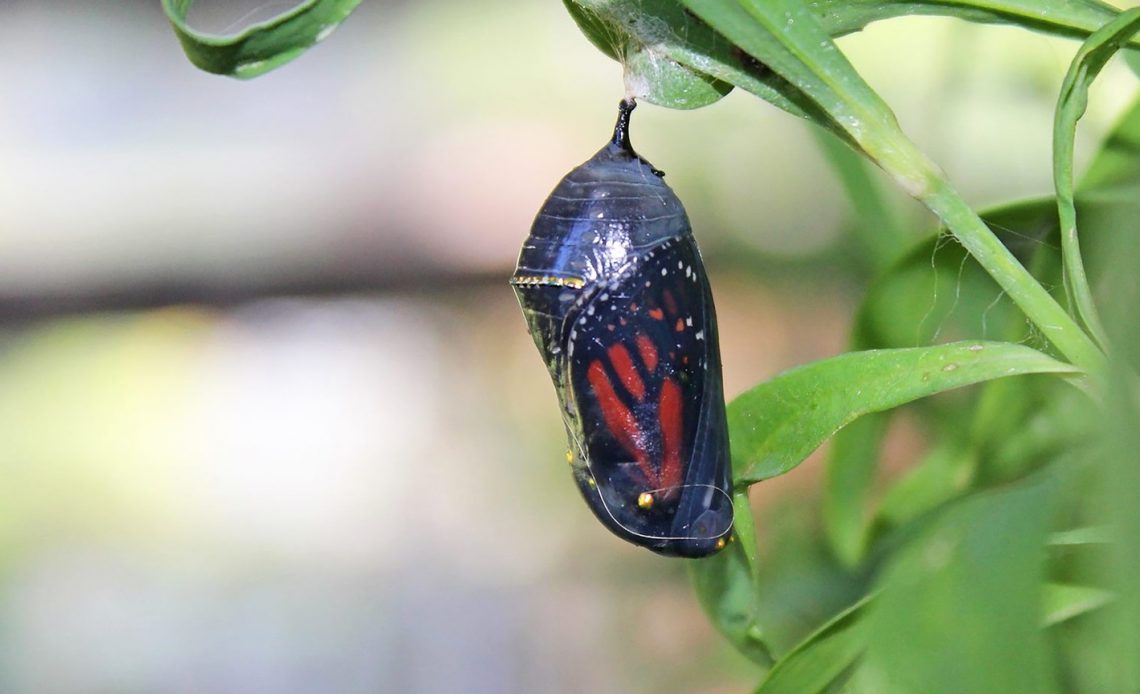

We’re here to help! Wild Yards is a completely free website that is 100% dedicated to helping you create a wildlife-friendly, sustainable yard. Read more
WildYards is reader-supported. When you buy a product through a link on our site, we may earn a comission. Every product is independently selected by our (obsessive) editors and our reviews are unbiased and objective. Read more about our mission or our privacy policy.
If you have ever had the great fortune of seeing a butterfly come out of its chrysalis for the first time, you will have likely felt immense wonder. However, you may have also been concerned by the sight of a red liquid that comes out with it that strongly resembles blood. So, do butterflies bleed when they hatch?
No, butterflies do not bleed when they hatch from chrysalises. If you’ve spotted red liquid seeping out of a chrysalis, it’s not blood – and don’t worry, the butterfly isn’t in any distress.
What is the liquid that seeps out when butterflies hatch?
When a butterfly hatches, it releases a red liquid known as meconium. It is a part of its former caterpillar body stored in the intestinal system while the butterfly transforms in the chrysalis – and it expels when it hatches. It is, therefore, a completely natural part of the transformation and no need for concern.
For all intents and purposes, meconium is the leftover caterpillar that’s no longer needed during the hatching. During this process, butterfly wings stiffen in the chrysalis, too – it’s a genuine process of metamorphosis.
The meconium will normally excrete through the butterfly’s anus, and it will normally start to flow out 30-40 minutes after the creature starts to emerge.
Bizarrely enough, it’s thought that in centuries gone by, butterflies releasing meconium were thought to foretell disaster to come. Thankfully, scientific research has helped us to clear this up over the years!
Interestingly, butterflies do bleed, and when they do, it’s red like our own blood. However, it’s very unlikely you’ll see blood during butterfly hatching.
Do butterflies feel pain during hatching?
Thankfully, butterflies do not feel pain when they emerge from the chrysalis. Although it may not seem like the most comfortable thing in the world, that is the extent of what they will feel – discomfort.
Studies are ongoing, however, it’s thought butterflies cannot feel pain whatsoever. While they have complex nervous systems, they do not, in fact, have pain receptor capacity. Therefore, while hatching from a chrysalis will take considerable time, your local butterfly is unlikely to feel distressed.
Should I help a butterfly emerge from a chrysalis?
No, trying to help a butterfly emerge out of a chrysalis can actually do more harm than good. Butterflies should emerge from their chrysalis themselves as it is important to help them strengthen their wings. This is one natural process you’ll likely do best to avoid interfering with.
Some sources and anecdotes advise that you can help butterflies hatch with a pair of tweezers and gently open up their cocoon. However, unless you are an experienced wildlife specialist, it’s not worth upsetting this process.
If you keep butterflies of your own in a cage or enclosure, you can help newly-released creatures by opening up their environment as soon as the weather is clear.
In some cases, you can welcome a butterfly to your hand, but on the whole, they are safest left well alone.
How do I know when a butterfly is ready to hatch?
You will normally be able to tell that a butterfly is ready to emerge when its chrysalis appears to be transparent.
The process of a chrysalis turning transparent can take quite some time. In fact, from a caterpillar cocooning onwards, it may take up to two weeks for a fully-formed butterfly to emerge!
It is all the more reason, therefore, to have plenty of wonderful flowers and plants ready to attract butterflies when they emerge.
